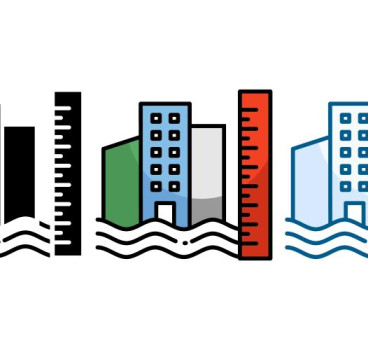Minimising noisy acoustics
Noisy air conditioning systems in workplaces can help to contribute to excessive background noise and can have a profound, negative impact on employee productivity, increasing stress and anxiety levels. It is serious enough for the Department for Health to warn that elevated workplace or environmental noise “can cause hearing impairment, hypertension, ischemic heart disease, annoyance and sleep disturbance.”
Companies across the world are now looking seriously at ways to minimise such noise says Denis Kerr Sales Director at Krantz Limited, who makes an informed case as to why we should choose sophisticated air-distribution systems which minimise or even remove noisy acoustics at work, looking at why the right products can significantly help to improve the office environment.
In modern office spaces and further afield, exposed ceilings and soffits are a prominent design trend. Whether developers choose to reveal ceiling beams for aesthetic purposes or turn to design-savvy solutions to keep costs to a minimum, exposed ceilings are a thing of the future for modern commercial spaces.
As exposed soffits are now a common design feature in such environments, it is crucial to manage acoustic levels accurately. Without the correct products to minimise such noise there is the risk of creating a harsh atmosphere, with a cacophony of different sounds ricocheting around the environment.
The challenges
It is important to keep acoustic levels controlled within these spaces, especially in environments where people work. The combination of higher ceilings, exposed services, computer monitors and human voices create an impractical environment, increasing stress levels in the workplace.
With exposed soffits, there isn't a natural method for the architecture to control or reduce acoustic levels; essentially there isn't any material for sound absorption. The ceiling is completely revealed to the human eye, with its services (the fans, ductwork and lighting) on view they can directly contribute to the background noise levels resulting in a poor acoustic performance of the space.
What are the options?
Many elements come into play when managing a space's acoustics, including the way air-conditioning systems are designed. To create a peaceful, workable and visually-engaging environment, the right air-distribution system must be selected. Some environments often require tailor-made, bespoke solutions to minimise noisy acoustics; there are, for example, these kinds of air-distribution systems in acoustically-sensitive buildings such as the Elbphilharmonie Hamburg, Germany. A concert hall on this scale demanded acoustically-advanced solutions; bespoke sound control was completely necessary in this location as noise could interfere with the artist's focus and the paying audience's enjoyment.
But in terms of air-distribution systems for commercial spaces, products such as the Krantz AVACs system (Air Ventilation And Cooling system) keep acoustic interference to a minimum and can actively improve the space. These systems are designed to great detail and sophistication; they do not contain any moving mechanical parts so the systems cannot generate any noise. Through convective radiant panels, AVACs heat and cool without the use of a fan, completely removing the presence of disruptive sounds. All of the acoustic absorption can be hidden within the panelling, and they are acoustically-designed to reduce noise and improve the reverberation time of the space.
More importantly, by selecting a multifunctional system which heats, cools and controls acoustics, the occupants' comfort is not compromised. These systems distribute fresh air around a space, ensuring thermal and acoustic comfort, which is of particular significance to employee wellbeing and happiness. According to the World Health Organisation, it is estimated that the annual cost to Europe from excessive noise levels is £30 billion. This extortionate sum accounts for lost working days, healthcare costs and reduced productivity.
Acoustic control is a complete design necessity in commercial workspaces. Although exposed ceilings are perfect for new build and future retrofits and make maintenance easier, it is important to take all elements into consideration when planning an acoustically-sound space. In terms of air-distribution products, there are sophisticated, multifunctional solutions available on the market which, simultaneously, control acoustics and heat and cool spaces. As commercial office spaces tend to be acoustically-demanding areas, flexible, state-of-art air-distribution technologies should be a priority, particularly as they can assure thermal comfort without any unwanted background noise inconveniencing the occupants.
Visit: http://www.krantzuk.com
Additional Blogs

When fire breaks out who really knows the system
The story that caught my attention recently wasn’t about fire growth or building loss, it was about confusion. Specifically, the confusion faced by the fire service when arriving at buildings...
Read moreThe design and development of Nexus Layouts
When Zentia set out to rethink the suspended ceiling, the brief was clear: deliver greater creative freedom for designers, more distinctive visual identity for clients, and a solution that could keep...
Read more

The 100-year construction project or why longevity Is the new sustainability
For decades, the construction sector has defined sustainability through metrics such as operational energy, embodied carbon, material efficiency and circularity. These measures remain vital, but a...
Read more